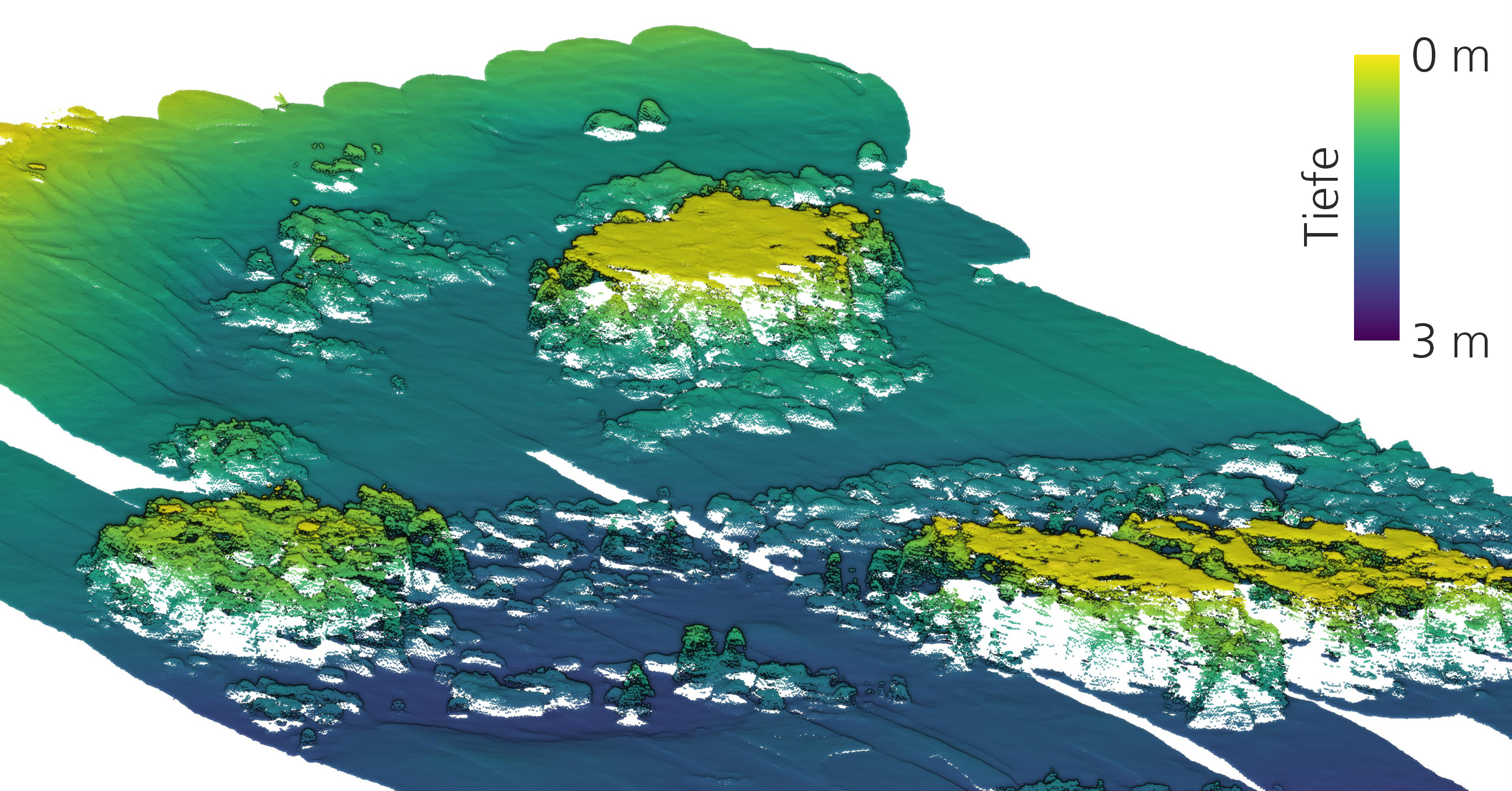ACQUA-3D research project gets underway
Compact system for topographical measurement of shallow bodies of water
The topography of bodies of water can be measured from the air using laser scanners. Laser bathymetry brings a number of advantages compared with using an echo sounder or other optical methods. As part of the ACQUA-3D research project, a team at Fraunhofer IPM is cooperating with the University of Stuttgart and application partners EOMAP GmbH and Geo Group GmbH to develop a particularly small and lightweight bathymetric measurement system for use on UAVs, for the particular application of measuring shallow bodies of water.

The underwater topography of coast- and shorelines provides information about potential flood risks or environmental changes. This makes bathymetry an important tool for coastal protection and disaster control. Today, bodies of water are usually measured from ships using an echo sounder or from airplanes using optical sensors, depending on how deep and turbid the water is. Echo sounders are particularly suitable for deep and turbid waters. The disadvantage of sonar measurements is that they are inefficient in coastal waters and that they can only be carried out in navigable waters. In contrast, laser-based, bathymetrical measurements taken from the air can achieve a high spatial resolution, even in shallow, turbid waters. Based on time-of-flight measurements from pulsed lasers, these systems have become increasingly popular for measuring bodies of water in recent years. However, there are only a few systems available on the market, and they are either too heavy to be used on a UAV (unmanned aerial vehicle), feature an insufficient penetration depth, or do not exploit the full potential of multi-wavelength measurements.
Terrain model including semantic classification of terrain and vegetation
The ACQUA-3D project brings together research partners for the development of a compact laser bathymetry system for measuring underwater topography, including specially adapted data interpretation. The multisensor system with a projected total weight of less than 3 kilograms consists of a LiDAR module and a multispectral camera. The wavelengths of the two pulsed lasers is suitable for identifying both the water’s surface and the water floor. The laser scanner is designed to capture 100,000 measurement points and 50 scans per second. Using a specially developed evaluation algorithm, a terrain model including semantic classification of terrain and vegetation will be automatically generated from the measurement data. The team of researchers are performing their test measurements on an underwater measurement area of 40 meters’ length, which was especially built at Fraunhofer IPM. The bathymetry system is to be tested in various bodies of water and at the Fraunhofer Ocean Technology Campus in Rostock further down the line.
Further information
The ACQUA-3D project is funded by the German Research Foundation (DFG) and the Fraunhofer-Gesellschaft as part of the trilateral transfer projects.
Project partners
- Fraunhofer-Institut für Physikalische Messtechnik IPM
- Universität Stuttgart
- EOMAP GmbH (Application partner)
- Geo Group GmbH (Application partner)